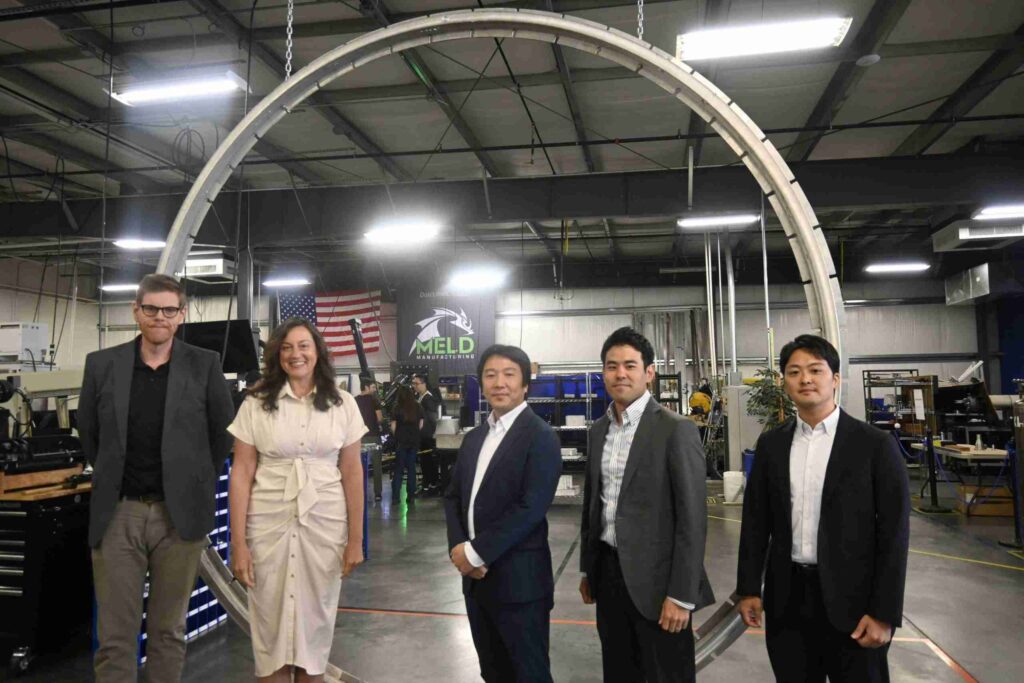In a significant move that underscores the growing global interest in large-scale metal 3D printing, MELD Manufacturing Corporation has announced a strategic partnership with Sumitomo Corporation. The Fortune 500 global trading and business investment company will become MELD’s first representative in Japan, focusing on sales, marketing, and support for MELD’s products and services. The partnership aims to leverage Sumitomo’s extensive network and experience in bringing new technologies to market, particularly in industries like shipbuilding, aerospace, and defense.
“Sumitomo Corporation, one of the most respected companies in Japan, is a trusted partner,” said Nanci Hardwick, CEO of MELD Manufacturing. “Sumitomo’s extensive network and experience in bringing new technologies to market will be invaluable to us as we expand our presence in Japan. Together, we will implement the advantages of additive manufacturing for our customers in shipbuilding, aerospace, and defense.”
The partnership will involve the installation of MELD printers, which are known for their large print volumes measured in meters. These printers utilize a proprietary additive manufacturing (AM) technology to create metal parts that were traditionally only possible through forgings.
MELD Manufacturing Corporation CEO Nanci Hardwick with a large-scale aluminum component built with the MELD process.
MELD Manufacturing has been a pioneer in the field of Additive Friction Stir Deposition (AFSD), a cold-welding process that overcomes many limitations associated with other metal 3D printing techniques. Earlier this year, the Virginia-based company spun off a new business, MELD PrintWorks Corporation, dedicated to AFSD metal 3D printing services. The technology offers advantages such as faster production times, reduced costs, and improved quality over traditional manufacturing methods.
The U.S. Army’s Rock Island Arsenal features the “world’s largest” metal 3D printer thanks to MELD’s technology. The absence of sintering or melting in MELD’s process allows for the use of commercially available, solid-state feedstocks without issues related to porosity or cracking. This capability is particularly valuable for military applications, where large, heavy metal parts are often required. Thus, the Army commissioned MELD and Ingersoll to develop the massive machine to produce tank parts for its Jointless Hull project.
The Army’s Jointless Hull subsection tool is a hybrid metal additive manufacturing machine used for engineering development and production in support of the full-size Jointless Hull machine located at Rock Island Arsenal – Joint Manufacturing and Technology Center. The full-size machine will be capable of producing large metal parts such as monolithic hulls for military ground vehicles. Image courtesy of the U.S. Army.
Sumimoto is one of Japan’s three largest conglomerates, possibly most well-known as the parent of Mazda Motor Corporation. No stranger to the world of 3D printing, the company increased its investment in metal AM service bureau Sintavia in 2020, aiming to scale its production capacity for flight-critical components. The investment was part of Sumitomo’s broader strategy to contribute to Sintavia’s growth and enlarge its value proposition mainly in the aerospace industry.
The partnership between MELD and Sumitomo comes at a time in which AM is being significantly ramped up by the U.S. military and global governments, which is simultaneously occurring as Japanese businesses make serious moves in the industry. It is not insignificant that Sumimoto is collaborating with two emerging leaders in metal 3D printing for the U.S. military and its defense contractors while its competitors Mitsubishi does the same through Nikon and Morf3D.
It also comes at a time when the large-format 3D printing sector is expected to be worth $739 million by 2026, according to the “DED and Large-Format Additive Manufacturing Markets: 2021-2030” report from Additive Manufacturing Research (formerly SmarTech Analysis). As MELD continues to expand its technology, the clear distinction between MELD Manufacturing and MELD PrintWorks could open up interesting possibilities, such as collaborations with service bureaus like Sintavia.
